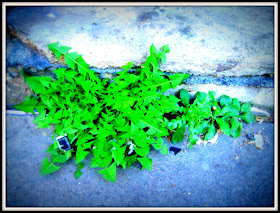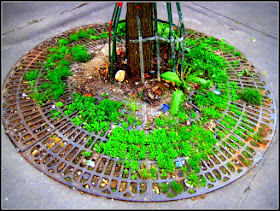 |
| Romain Julliard, ©Stéphanie Jayet http://stephjayetphoto.blogspot.fr/ |
Vigie Nature is a participative science initiative which has already been running for several years. We began with an observatoire des papillons du jardin, initially asking amateur enthusiasts to work with us, and since then we have opened it up to include other animal and plant observations, and made it possible for anybody to join in. This year we are promoting three main initiatives for the general public; sauvages de ma ville, in which we ask people to count wild plants in urban areas, the observatoire des oiseaux des jardins, which is a survey of bird numbers in parks and gardens, and 50 000 observations pour la forêt where we would like people to count specific insect and animal species in forest environments.
Can anyone get involved?
Yes, all people need to do is visit the respective websites, choose your zone – a street, a forest, a park or a garden, according to the initiative you want to take part in - spend some time observing and counting, then log the results on the website.
It is a way of bringing people closer to their surroundings and helping them to understand what lives alongside them. People are becoming more and more divorced from nature, and we have noted - particularly amongst the younger generations - certain far-fetched ideas about the natural world. We would like them to develop more emotional links to nature.
Paris is home to a surprising number of wild species. For example, over 50 types of birds have been counted in the city, as well as other animals and plants. Many species have learned to adapt to city life, even if others have found it very difficult. For example, through this initiative we have noted that certain species of butterfly have struggled in urban environments whereas bee keepers tell us that bees thrive in city environments.
It’s a good question. You could argue that it isn’t an absolute necessity, but at the very least I would say it is important for our spiritual well-being. In any environment diversity is important.
Is it the goal of Vigie Nature to influence how cities are designed? Should the integration of nature be an essential part of all urban planning?
We have no specific role to play in this domain, beyond bringing to the attention of decision makers the results of our studies. As far as cities are concerned, I think it is important that nature does not become a point of conflict. Nature in cities should be – as far as possible – for the benefit of city dwellers, and not closed off in unaccessible zones. Outside of the cities themselves, our principal concern is the development of the urban sprawl.
Well, the idea of these initiatives is that people just observe areas that are local to them, but if they are interested in spotting as many species as possible, there are several interesting areas. If we concentrate just on birds, obviously the large parks – such as the Buttes Chaumont – are good areas, but cemeteries are also very popular with birds. More surprising areas would be the friches (post-industrial waste lands) on the edges of Paris or the old Petite Ceinture railway line. However, two of the best places are closed to the public. The gardens of the Elysees palace (nb - home of the French President) and the Hotel Matignon (nb - home of the French Prime Minister) are two of the only places that Great spotted woodpeckers have been seen in Paris!
To get involved:




The more nature in cities... the BETTER ! In fact, the less cities in nature... the BETTER !
ReplyDeleteIn San Francisco, I was woken up by raccoon fights, had to have an opossum removed from my basement (he successfully evaded us for a week!) and had gophers eating the plants in my backyard. At times I wished for less nature ;) but was amazed this could be happening within a city's limits.
ReplyDeleteI'm happy to see that in some parks, certain areas today are left wild. ... not forgetting totally "wild" small parks like St. Vincent and the "Jardin Naturel" just south of Père Lachaise.
ReplyDeleteLynn: although somewhat less exotic, it's similar in the UK. Foxes live in urban environments, and my sister even had a deer in her garden on several occasions. In France, nature seems to have enough space and food outside of cities.
ReplyDeletePeter: Yes, there has been a change of mentality, but as Mr Julliard says, it's important that these areas are still in 'parks' and available for the benefit of the inhabitants of Paris.
"Sauvages de ma rue" also participes to a similar program named "Missions Printemps". For more information : http://missionsprintemps.arte.tv/
ReplyDelete